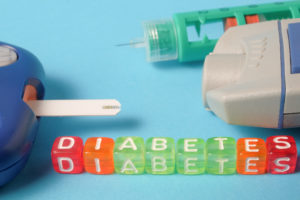
For all that we know about diabetes, there's still a lot of misinformation. Here are some of the most common myths about diabetes—along with information you can rely on.
Myth # 1: Once you start taking diabetes medicine, you can never stop.
Fact: There are temporary conditions such as surgery that cause elevated glucose levels and require insulin. But after surgery, with continued emphasis on healthy eating habits and regular physical activity, glucose levels may be controlled without medication.
Myth #2: If you love white bread, potatoes, and pasta, you're out of luck. White foods are off-limits if you have diabetes.
Fact: “While it is better to choose brown bread and grains over white versions, it does not mean that everything white is not good for you,” says registered dietitian Kristen F. Gradney, MHA, RDN, LDN, spokesperson for the Academy of Nutrition and Dietetics.
“Plenty of white foods are a good source of nutrition such as cauliflower, potatoes with the skin (in the correct portion), beans, and mushrooms.”
Myth #3: Eating peanut butter is a good treatment for hypoglycemia
Fact: Hypoglycemia is also called low blood glucose or low blood sugar. The American Diabetes Association recommends treating hypoglycemia with a fast-acting source of carbohydrate (for example, 2 to 3 glucose tablets, 4 ounces fruit juice, 4 ounces regular soda, or one tablespoon of sugar or honey). Foods containing fats are not recommended to treat hypoglycemia. Gradney says, "Peanut butter contains fat which will slow the absorption of carbohydrates and may not increase blood glucose fast enough.”
YOU MIGHT ALSO LIKE: The 5 Best Benefits Of Peanut Butter
Myth #4: If you eat too many sweets, you’ll get diabetes.
Fact: Diabetes isn’t caused by eating too much sugar: it’s caused by genetics and lifestyle factors. However, eating foods high in sugar, fat, and calories can cause you to become overweight, which increases your risk of developing type 2 diabetes.
Myth #5: Fruit is off-limits if you have diabetes.
Fact: Gradney says, “The low-carb craze has created a phobia of all carbohydrates, including good ones. Fruit can provide vitamins, antioxidants, and fiber—all good things for people with diabetes.” You can eat fruit fresh, canned, frozen, or dried. Cut them up, eat them whole or puree them into a smoothie. Remember to count fruit as part of your total carbohydrate intake.
Myth #6: Insulin is a cure for diabetes.
Fact: There is no cure—at least not yet. There are only medicine and behaviors that can control diabetes. Insulin helps do that by keeping the blood sugar from rising.
CHECK THIS TOO: The 10 Best Foods For Diabetes
Myth #7: You can have a “touch” of diabetes.
Fact: Sometimes, people use the phrase “a touch of diabetes" to minimize the seriousness of the condition. "Either you are diagnosed with diabetes, or you do not have diabetes,” Gradney says. If you put diabetes on the back-burner, it can simmer there until it boils over into a full-fledged crisis. “Be sure to ask your doctor if you have, in fact, been diagnosed with diabetes, and if you are on medication, ask what it is for,” says Gradney.
Myth #8: If you don't take diabetes medicine, your diabetes must not be serious.
Fact: Not everyone who has diabetes takes diabetes medicine. If the body produces some insulin, then weight loss, healthy eating habits, and regular physical activity can help insulin work more effectively. However, diabetes does change over time, and diabetes medicine may be needed later.

Constance Brown-Riggs, is a registered dietitian, certified diabetes educator, national speaker and author of the Diabetes Guide to Enjoying Foods of the World, a convenient guide to help people with diabetes enjoy all the flavors of the world while still following a healthy meal plan. Follow Constance on social media @eatingsoulfully









